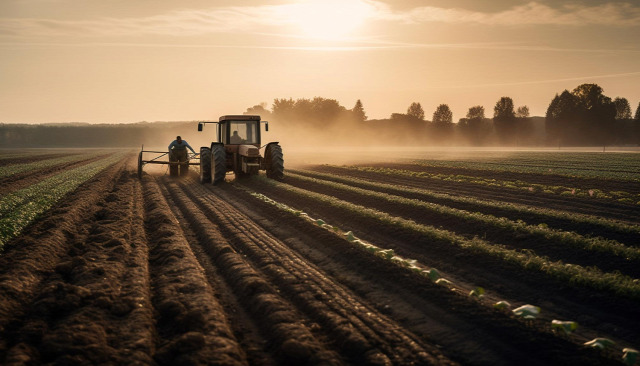
Traditional agricultural practices often involve extensive soil disturbance through plowing and tilling, which can lead to soil erosion, nutrient depletion, and increased greenhouse gas emissions. In response to these challenges, the no-till and minimum-till equipment market has emerged as a transformative force in sustainable agriculture.
No-Till and Minimum-Till are agricultural techniques that aim to reduce soil disturbance, thereby promoting soil health and sustainability. No-Till Farming is a method where crops are grown without disturbing the soil through tillage. Whereas, Minimum-Till Farming involves cultivating land using mechanical methods other than ploughing.
According to BIS Research, the Global No-Till and Minimum-Till Equipment Market was estimated to be worth $6.58 billion in 2023 and is projected to grow at a compound annual growth rate (CAGR) of 6.15% to reach $8.87 billion by 2028.
Key Market Drivers
Soil Conservation and Sustainability:
- No-till and minimum-till practices are driven by the need for soil conservation and sustainability.
- They enhance soil structure, reduce erosion, conserve moisture, and boost organic matter content.
- These practices ensure the long-term sustainability of agricultural land.
Environmental Concerns:
- Conventional tillage practices release carbon dioxide, contributing to climate change.
- No-till and minimum-till methods help mitigate greenhouse gas emissions by sequestering carbon in the soil.
- They also reduce fuel consumption, minimize agrochemical use, and promote environmental friendliness.
Cost Savings and Efficiency:
- No-till and minimum-till practices offer economic benefits to farmers.
- They reduce fuel, labor, and equipment costs by minimizing the need for multiple passes with heavy machinery.
- Additionally, these practices improve water infiltration, reduce evaporation, and enhance water conservation efficiency.
Click here to Download the FREE Sample PDF Report on No-Till and Minimum-Till Equipment Market Research.
Benefits of No-Till and Minimum-Till Equipment
Soil Health and Fertility:
- No-till and minimum-till practices preserve soil health and fertility.
- They protect against erosion, promote nutrient cycling, and enhance microbial activity.
- Improved soil health results in higher crop productivity and decreased reliance on synthetic fertilizers.
Water Management:
- These practices enhance water management in agricultural systems.
- They improve water infiltration, reduce runoff, and increase water-holding capacity.
- This leads to better drought tolerance, decreased irrigation needs, and increased resilience to climate variability.
Biodiversity and Wildlife Conservation:
- No-till and minimum-till practices support biodiversity and wildlife conservation.
- Crop residues and reduced soil disturbance create habitats for beneficial insects and birds.
- This fosters natural pest control, reduces pesticide usage, and maintains ecological balance in agricultural landscapes.
Future Market Prospects and Challenges
Technological Advancements:
- Ongoing technological advancements drive market growth in no-till and minimum-till practices.
- Innovations include precision planting systems, residue management tools, and advanced seeders.
- Integration with digital agriculture technologies and automation enhances precision and ease of implementation.
Knowledge and Adoption:
- Promoting knowledge sharing and farmer education is crucial for increased adoption.
- Familiarizing farmers with benefits, best practices, and equipment aids in overcoming resistance.
- Government support and incentives play a vital role in encouraging adoption.
Field-Specific Challenges:
- No-till and minimum-till practices face challenges in specific field conditions.
- Heavy clay soils or regions with particular weed or pest pressures require customized approaches.
- Solutions include targeted herbicide applications, cover cropping, and integration with other sustainable practices.
Conclusion
The no-till and minimum-till equipment industry is driving a paradigm shift in agriculture towards sustainable and regenerative practices. By preserving soil health, conserving resources, and mitigating environmental impacts, these practices offer a viable solution to the challenges facing modern agriculture. As technological advancements continue and knowledge dissemination expands, the widespread adoption of no-till and minimum-till practices holds the promise of a more sustainable and resilient future for global food production.

